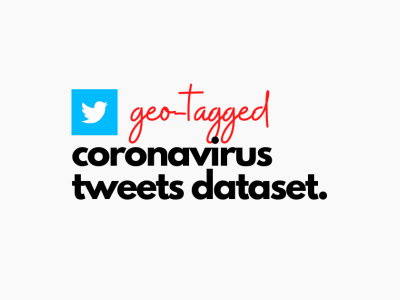Valorant Champions Tour 2024: Pacific and EMEA Round Data

- Citation Author(s):
-
David Wang
- Submitted by:
- David Wang
- Last updated:
- DOI:
- 10.21227/v3bk-2n86
- Data Format:
 23 views
23 views
- Categories:
- Keywords:
Abstract
This dataset comprises 1301 rounds collected from the 2024 Valorant Champions Tour Pacific and EMEA. Specifically, those rounds contain completed information on Team A and B's number of available ultimate abilities each round, the average number of ultimate points until ultimate ability for each team per round, and each team's total loadout value per round. Each round's outcomes are labeled and weighed against the predicted outcomes in future logistic regression modeling.
The dataset also features data on a team's historical "map" win percentage, "attacker side" win percentage, "defender side" win percentage, the map's outcome, and incompleted data on the number of ultimate points and orbs each team acquired per round. In this case, these data are not used to produce the results of the paper.
Instructions:
The data is repeated for each map, the environment where each game in a best-out-of-3 or best-out-of-5 game series is played, in the VALORANT Champions Tour of each region. The data for each map reflect the number of rounds played on the map before a team won and the statistics within those rounds.
Each map is labeled with
the game's matchup (team names) [Row 1, Col. A],
date & time [Row 2, Col. A],
the version of VALORANT the game is played on [Row 3, Col. A],
and the event the game is taking place in [Row 4, Col. A].
The assignment of Team A and Team B is determined by the order in which game analytic websites, vlr.gg and rib.gg, and the official Valorant esports website place them.
For each map as a whole, each team consists of the following completed data:
# of Half Buys (The number of rounds where the Total Loadout Value was between, but not including, 10,000 and 19,500 in the in-game currency) [Row 6, Col. D, E].
# of Full Buys (The number of rounds where the Total Loadout Value was at least 19,500 in the in-game currency) [Row 7, Col. D, E].
# of Eco/Low Buys (The Number of rounds where the Total Loadout Value was at most 10,000 in the in-game currency) [Row 8, Col. D, E].
Actual Map Winner (The team that won the map) [Row 20, Col C].
Starting Team map win% (The team's map win percentage before the match; default = 50%) [Row 13, Col. D, E].
Starting Given Map Attack side win% (The team's map win percentage before the match on the attacker side; default = 50%) [Row 14, Col. D, E].
Starting Given Map Defense side win% (The team's map win percentage before the match on the defense side; default = 50%) [Row 15, Col. D, E].
Ending Team map win% (The team's map win percentage after the match) [Row 16, Col. D, E].
Ending Given Map Attack side win% (The team's map win percentage after the match on the attacker side) [Row 17, Col. D, E].
Ending Given Map Defense side win% (The team's map win percentage after the match on the defense side) [Row 18, Col. D, E].
The following data is also collected but is incomplete:
The percentage of all available Ultimate Points acquired by each team [Row 11, 12, Col. F].
Total Number of Ultimate Points Each Team Collected [Row 9, Col. D; Row 10, Col. E]
Total Number of Ultimate Orbs Each Team Collected [Row 11, Col. D; Row 12, Col. E]
For each round within a map, the following data is collected but is incomplete:
Number of Ultimate Points Team A Acquired [Row 9, Col. G-> ]
Number of Ultimate Points Team B Acquired [Row 10, Col. G-> ]
Number of Ultimate Orbs Team A Acquired [Row 11, Col. G-> ]
Number of Ultimate Orbs Team B Acquired [Row 12, Col. G-> ]
Predicted Round Winner Based on Economy (the predicted winner of the round determined by which team had the highest Total Loadout Value) [Row 30, Col. G-> ]
For each round within a map, the following data is collected and used in producing the final round-win probability logistic regression model:
Team A # of Available Ultimate (total amount of ultimate abilities Team A has) [Row 22, Col. G-> ]
Team B # of Available Ultimate (total amount of ultimate abilities Team B has) [Row 23, Col. G-> ]
Team A avg # of ultimate points until ability (The average in the amount of ultimate points each player in Team A needs to obtain their ultimate ability; players who already have their ultimate ability are excluded from the calculation; if every player has their ultimate ability, the calculation will treat each player as having 0 ultimate points; value is rounded to the 5th decimal place; DATA WILL BE SCALED IN SCRIPT, see lines 129-131) [Row 24, Col. G-> ]
Team B avg # of ultimate points until ability (The average in the amount of ultimate points each player in Team B needs to obtain their ultimate ability; players who already have their ultimate ability are excluded from the calculation; if every player has their ultimate ability, the calculation will treat each player as having 0 ultimate points; value is rounded to the 5th decimal place; DATA WILL BE SCALED IN SCRIPT, see lines 129-131) [Row 25, Col. G-> ]
Team A total equipment value (the total loadout value of the team, including each player's basic abilities and equipment costs) [Row 26, Col. G-> ]
Team B total equipment value (the total loadout value of the team, including each player's basic abilities and equipment costs) [Row 27, Col. G-> ]
Actual Round Winner [Row 28, Col. G-> ]
The following data is collected for each map series but is incomplete:
Betting Predicted Game Winner (the game series' predicted winner as determined by the betting market as shown on vlr.gg) [Row 66]
Vlr.gg Elo Predicted Game Winner (the game series' predicted winner as determined by each team's Elo as shown on vlr.gg) [Row 67]
The following data is collected for each map series:
Starting Elo (The starting Elo of each team before the game series; default = 1500, K = 25) [Row 70, Col. C, D]
Ending Elo (The starting Elo of each team after the game series; K = 25) [Row 71, Col. C, D]
Expected Score (the probability that Team A wins based on Starting Elo) [Row 72, Col. B]
All other data categories present in the dataset are inconsequential and/or irrelevant within the scope of this study.







